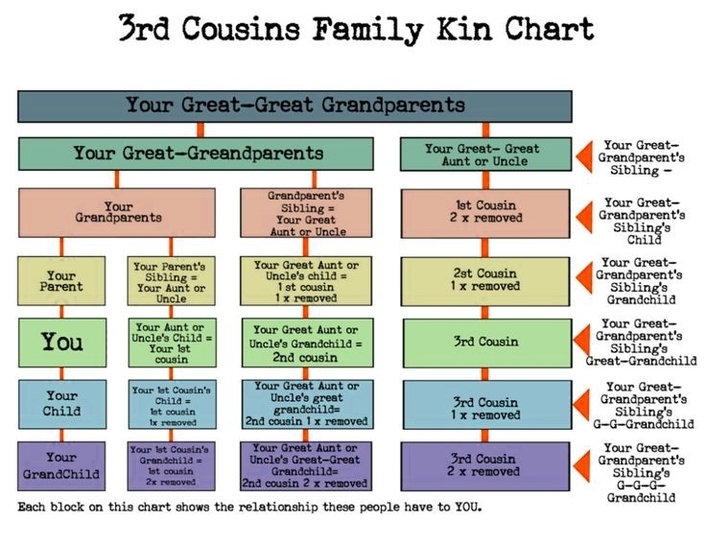Understanding Cousin Relationships in Genealogy
Genealogy, the study of family ancestries and histories, often involves understanding complex relationships between family members. One such relationship is that of cousins. The term “cousin” is used to refer to relatives with whom we share a common ancestor, but the relationship can be categorized further based on the degree and the generation.
First Cousins
First cousins are the children of your aunts and uncles. You share a common set of grandparents with your first cousins.
econd Cousins
econd cousins share the same great-grandparents, but not the same grandparents. This means their grandparents are siblings, and their parents are first cousins.
Third Cousins
Third cousins share the same great-great-grandparents. Their great-grandparents are siblings, their grandparents are first cousins, and their parents are second cousins.
This pattern continues as you move into fourth, fifth, and so on, cousin relationships. Each subsequent degree of cousinship involves moving one generation further back to find a common ancestor.
Cousins “Removed”
The term “removed” is used to describe the generational difference between cousins. For example, your parent’s first cousin would be your first cousin once removed because there is a one-generation difference between you. Similarly, your grandparent’s first cousin would be your first cousin twice removed.
Cousin’s Cousin
The relationship between you and your cousin’s cousin can vary. If this cousin is the child of your uncle or aunt, then this person would also be your cousin. However, if this cousin is the child of a sibling to the parent of your cousin, but married into the family and not related by blood, then this person is not a relation.
Calculating Cousin Relationships
There are several methods to calculate cousin relationships. One common method involves identifying the shared grandparent, finding this grandparent on a cousin chart, and then seeing where the lines intersect. Another method involves using a cousin calculator, where you input your relationship to the common ancestor and the calculator tells you how you’re related.
Conclusion
Understanding cousin relationships can be complex, but it’s an essential part of genealogy. By understanding the degrees and generations, you can accurately identify and label these relationships, helping to create a clearer picture of your family tree..


